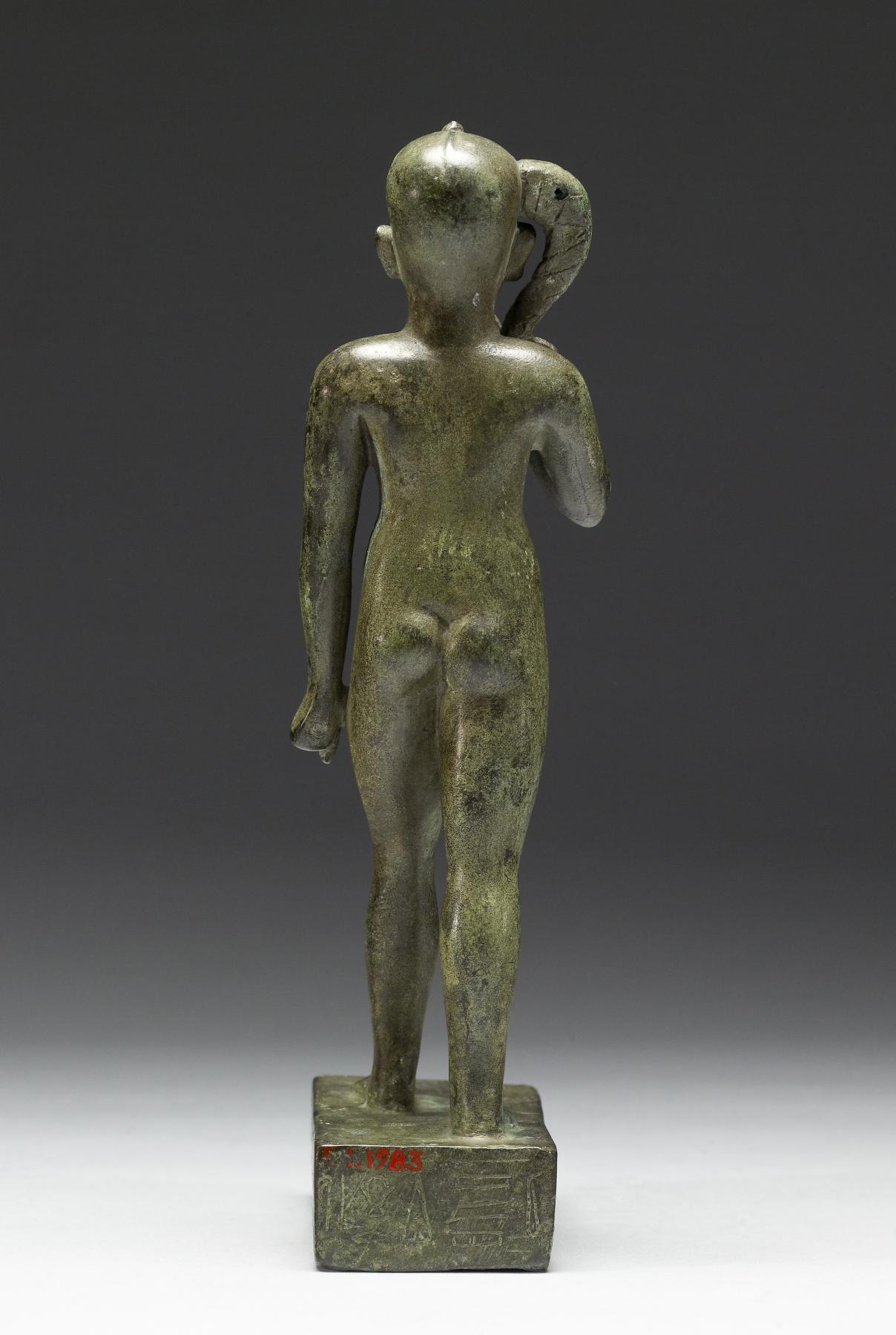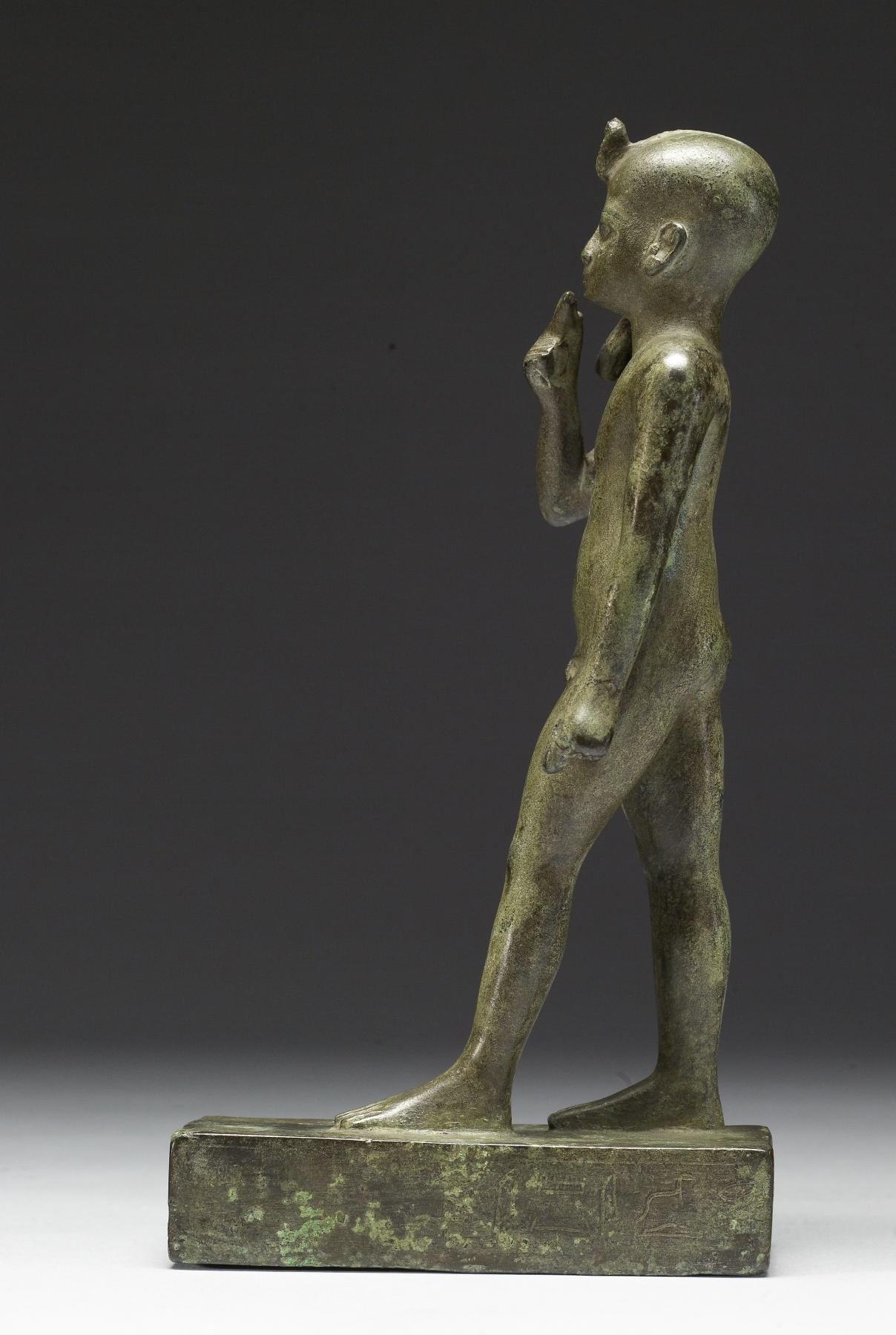Harpokrates (Horus the Child)
(Ancient Egypt and Nubia )
Harpocrates or "Horus the Child" was the son of Isis and Osiris. He represents legal kingship as mythical successor of his father Osiris, who, in death, became Lord of the Netherworld. He was especially popular in the Late Period and Ptolemaic period.
Representations such as this show him as a nude boy with his finger to his mouth, and a sidelock of hair, the symbols of childhood. Here he also has a uraeus (a cobra serpent) above his forehead, symbolizing his entitlement to kingship.
Provenance
Provenance (from the French provenir, 'to come from/forth') is the chronology of the ownership, custody, or location of a historical object. Learn more about provenance at the Walters.
Henry Walters, Baltimore [date and mode of acquisition unknown]; Walters Art Museum, 1931, by bequest.
Conservation
| Date | Description | Narrative |
|---|---|---|
| 4/30/1957 | Treatment | cleaned |
| 11/24/1998 | Examination | survey |
Geographies
Egypt (Place of Origin)
Measurements
H: 7 3/4 x W: 2 3/16 x D: 4 in. (19.7 x 5.5 x 10.2 cm)
Credit Line
Acquired by Henry Walters
Location in Museum
Accession Number
In libraries, galleries, museums, and archives, an accession number is a unique identifier assigned to each object in the collection.
In libraries, galleries, museums, and archives, an accession number is a unique identifier assigned to each object in the collection.
54.1983












